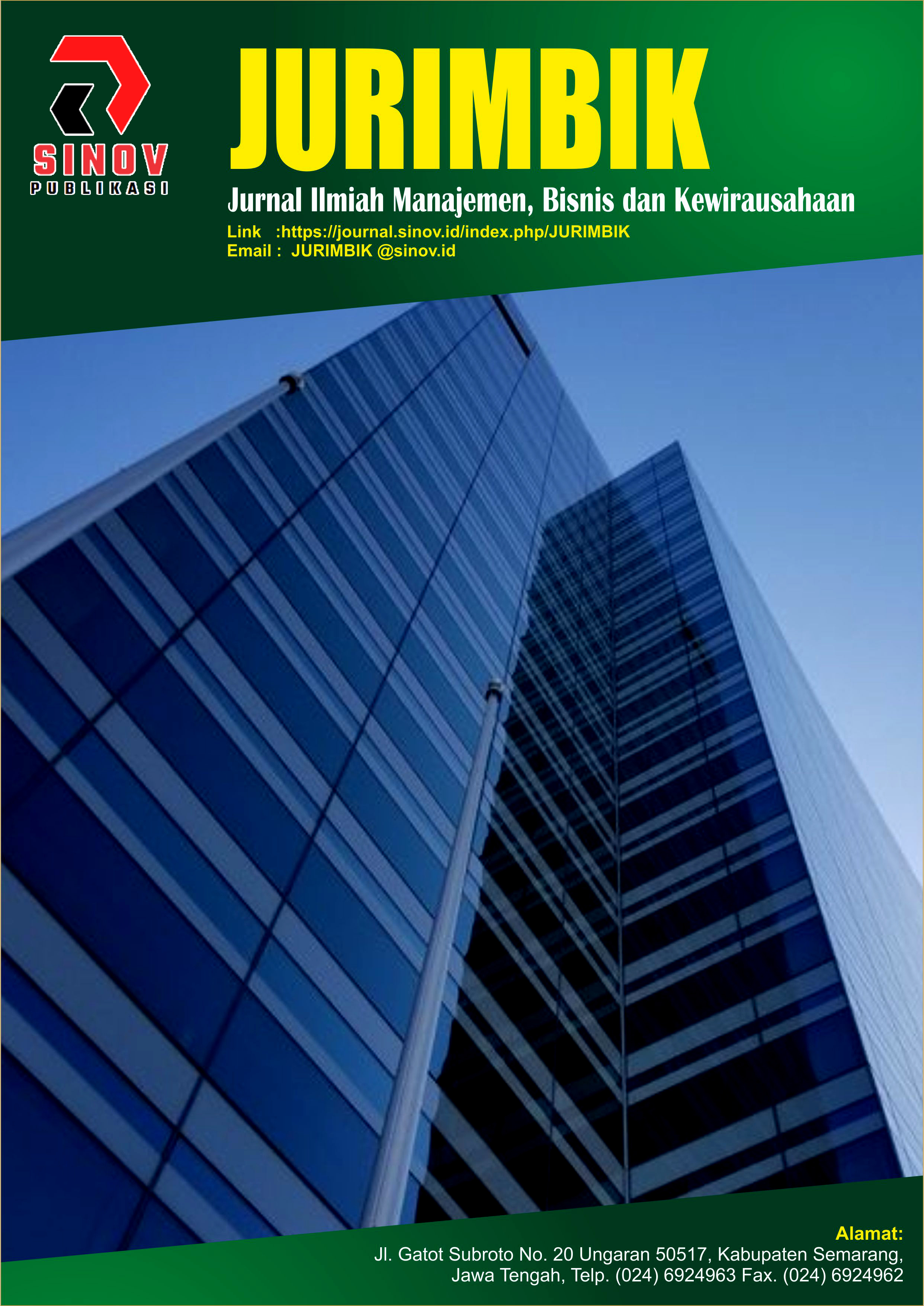Analisis Persepsi Konsumen terhadap Penggunaan Aplikasi Livin by Mandiri
DOI:
https://doi.org/10.55606/jurimbik.v5i2.1078Keywords:
Consumer Perception, Mobile Banking, Technology Acceptance Model (TAM), Livin by Mandiri, Qualitative Content AnalysisAbstract
This study aims to analyze consumer perceptions regarding the use of the Livin by Mandiri mobile banking application. The research is grounded in the Technology Acceptance Model (TAM), focusing on two main constructs: perceived usefulness and perceived ease of use. Data were collected using a qualitative content analysis approach, with user comments on the Google Play Store serving as the primary data source. The findings reveal that while many users express positive attitudes toward the functionality and features of the application, a significant portion also reports dissatisfaction with system performance, user interface, and customer service response times. The study contributes theoretically by validating the applicability of TAM in the context of mobile banking, and practically by offering insights for developers to enhance the user experience of Livin by Mandiri. Furthermore, this research introduces a novel methodological approach by utilizing digital user reviews as a primary data source. It is recommended that future studies incorporate broader data sources, including social media comments and surveys, to strengthen the generalizability of the findings.
References
Agustini, N. L. P. L. E. (2022). Pengaruh Kualitas Pelayanan dan Kepuasan Pelanggan Terhadap Loyalitas Pelanggan m-banking Livin by Mandiri di Kabupaten Karangasem (Doctoral dissertation, Universitas Pendidikan Ganesha).
Bank Mandiri (2024) Laporan Tahunan 2024. Bank Mandiri Persero Tbk.
Cooper, D. R., & Schindler, P. (2014). Business research methods. Mcgraw-hill.
Davis, F. D. (1989). Technology acceptance model: TAM. Al-Suqri, MN, Al-Aufi, AS: Information Seeking Behavior and Technology Adoption, 205-219.
Eriyanto, 2013, Analisis Isi Pengantar Metodologi Untuk Penelitian Ilmu Komunikasi dan Ilmu-Ilmu Sosial Lainnya, Jakarta: Kencana Perdana Media Group
Wibisono, E. A., Agustina, F., Arief, R., & Marleen, O. (2024). Analisis Tingkat Kepuasan Nasabah Fitur Sukha Pada Aplikasi Livin’by Mandiri Menggunakan Metode PIECES. Smart Comp: Jurnalnya Orang Pintar Komputer, 13(2), 235-246.
Fernos, J., & Alfadino, M. (2021). Pengaruh Manfaat, Kepercayaan, dan Kemudahan Penggunaan Terhadap Minat Nasabah Menggunakan Layanan Mobile Banking Pada PT. Bank Pembangunan Daerah Sumatera Barat Cabang Koto Baru Dharmasraya. Jurnal Manajemen Universitas Bung Hatta. Vol. 16 No. 2. Hal. 115-125. DOI: https://doi.org/10.37301/jmubh.v16i2.19032
Fishbein, M. and Ajzen, I. (1975), Belief, Attitude and Behavior: An Introduction to Theory and Research, Addison-Wesley, Reading, MA.
Gitleman, L. (2014). Definisi Mobile Banking. Paper Knowledge . Toward a Media History of Documents, 12–18.
Gumelar, P. A. (2023). Penerapan Metode End User Computing Satisfaction dan Technology Acceptance Model dengan Analisis Partial Least Square untuk Mengukur Tingkat Kepuasan Pengguna Aplikasi Livin’by Mandiri. Journal of Emerging Information System and Business Intelligence (JEISBI), 4(2), 52-61.
Holtrop, R., Wijoyo, S. H., & Nugraha, D. C. A. (2025). Analisis Faktor-Faktor yang Berpengaruh Terhadap Kepuasan Pengguna Aplikasi Livin by Mandiri Menggunakan Metode EUCS (Studi Kasus Mahasiswa di DKI Jakarta). Jurnal Pengembangan Teknologi Informasi dan Ilmu Komputer, 9(4).
Ilaahi, S. (2024). Penerapan Dukungan Teknologi Dalam Meningkatkan Loyalitas Nasabah Pada Aplikasi Livin By Mandiri (Doctoral dissertation, STIE Indonesia Banking School).
Kotler, Philip and Kevin Lane Keller, 2016. Marketing Managemen, 15th Edition, Pearson Education,Inc.
Lusiono, E. F., & Suharman, S. (2017). Analisis penerimaan aplikasi SISKEUDES di lingkungan pemerintah daerah Kabupaten Sambas. Jurnal akuntansi, ekonomi dan manajemen bisnis, 5(2), 163-172.
Napitupulu, D., Simarmata, J., Abdillah, L. A., Setiawan, M. I., Ahmar, A. S., Rahim, R., ... & Erliana, C. I. (2017, November). Analysis of Technology Acceptance Model (TAM) on E-Learning System. In 2017 International Conference on Education and Technology (2017 ICEduTech) (pp. 247-251). Atlantis Press.
Neuman, W. (2014). Social Research Methods: Qualitative and Quantitative Approaches Seventh Edition. Assex: Pearson Education Limited.
Riayu Putri Annisaa’ & Susanto Romi. (2021). Penerapan M-Banking Dalam Meningkatkan Jasa Dan Layanan Perbankan Di PT. Bank Pembangunan Daerah Sumatera Barat Cabang Siteba. Nuevos Sistemas de Comunicación e Información, 2013–2015.
Rafli, M., & Yunanto, M. (2024). PENGARUH KUALITAS LAYANAN, PENGALAMAN NASABAH TERHADAP KEPUASAN NASABAH DAN DAMPAKNYA PADA LOYALITAS NASABAH PENGGUNA MOBILE BANKING LIVIN MANDIRI. Journal of Syntax Literate, 9(5).
Safira, S. D., Ernawati, D., & Iqbal, M. (2023). Penerapan Technology Acceptance Model dalam Meningkatkan Minat Menggunakan Kembali M-Banking Livin by Mandiri. Jurnal Akuntansi, Ekonomi dan Manajemen Bisnis, 11(1), 28-40.
Santoso, A. A., & Rachmawati, I. (2021). Analisis Minat Pengguna Layanan M-banking Livin'By Mandiri Di Indonesia Menggunakan Model Modifikasi Utaut 2. eProceedings of Management, 8(5).
Umar, S., Fitriansyah, A., & Ar-Rasyid, H. (2023). Evaluasi Tingkat Kepuasan Pengguna Aplikasi Mobile Bangking Livin Bank Mandiri pada Mahasiswa ITB Swadharma Menggunakan End User Computing Satisfaction (EUCS). Jurnal Teknologi Informasi dan Komunikasi, 9(2).
Utami, V. D., Elfanza, V. C., Kusuma, R. L., & Albana, I. (2024). ANALISIS FAKTOR KEBERHASILAN PERANGKAT LUNAK LIVIN BY MANDIRI PADA PT BANK MANDIRI. Jurnal Ilmiah Sistem Informasi, 4(1), 114-125.
Downloads
Published
How to Cite
Issue
Section
License
Copyright (c) 2025 Jurnal Ilmiah Manajemen, Bisnis dan Kewirausahaan

This work is licensed under a Creative Commons Attribution-ShareAlike 4.0 International License.










